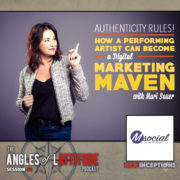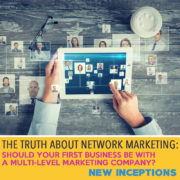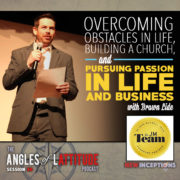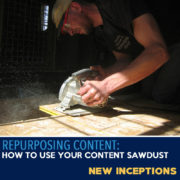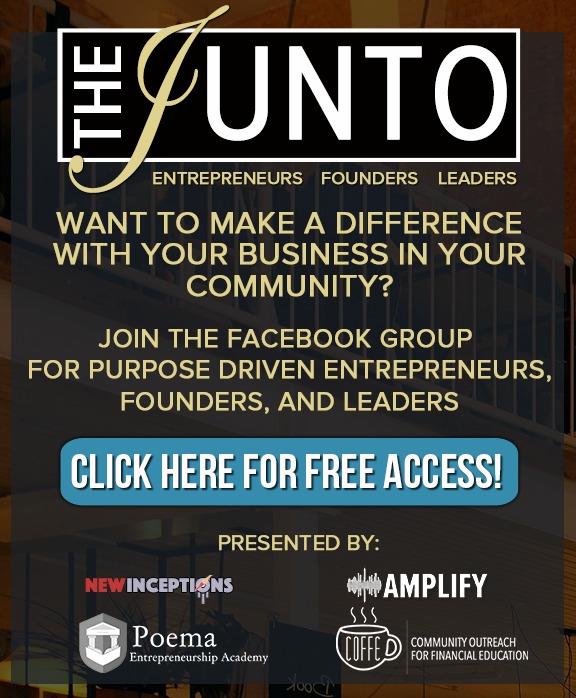AoL 041: Authenticity Rules – How a Performing Artist Can Become a Digital Marketing Maven with Mari Sauer
No matter your age, background, sex, or culture, in the United States you’re free to pursue anything you want to in your career. Many people don’t realize this. They believe that what they’ve always done or what they’ve always been determines their future.
One of the best mainstream movies that come to mind that I recently watched the sequel to is My Big Fat Greek Wedding. In that movie, there’s a ton of traditions that the main character, Toula, has to deal with as she realizes more about the life she wants to live and with whom she wants to live it with.
I know my own previous thoughts of what I could be always included something “technical”. I grew up loving video games, reading n0n-fiction books about astronomy, being a sci fi geek in general, and thinking about places that I could travel to – and how their cultures were different. All of these things in a small town were hard to achieve. So as I got more involved in the internet, I found myself exploring the world wide web even more. I believed that my excursion into electrical engineering would help me understand the technology that goes behind how it worked – but I don’t know if I ever expected for it to be the focus of my job, in retrospect.
Today, I like to believe that part of my quest with New Inceptions is helping people reconnect to that in which they loved to do in the past, or even more so, help them realize that the silly interest that they care about but no one else does, might actually be the thing that sets them free.
The guest of this session is someone I believe has had a similar realization. She’s a great example of someone who is discovering her new inception.
She loves to help people connect with others about what they’re doing through digital marketing. She also has a love of performance and, in fact, wanted to be a professional dancer as she was growing up. However, as you might know, artists generally can’t make a living on their art early on in the career – so they have to pay the bills through other work. And like many struggling artist stereotypes out there, she became a waiter.
Funny enough, though, she developed an interest in her work there too and soon in the rest of the world of hospitality.
When I found out about her past in dance, I knew I had to have her on the show to talk about her transition to the role that she plays now. Needless to say, she’s not just some kid in their 20’s who just because she knows how to set up a social media account calls herself a social media guru. She’s someone that uses her experience in these other fields to make her clients not only feel great about the work they’re doing, but also plan it out so well that it’d be suitable for a five-star hotel.
In this session with Mari Sauer, we talk about her trek through dance, hospitality, and what brought her to digital marketing. We’ll also discuss why she believes why solopreneurs need to be more consistent with their social media. And we also talk about Gary Vee a bit and his interest in SnapChat.
If you feel like you’re stuck on an island that is closed off to opportunity to become a truer version of yourself, I hope that this talk inspires you to get out of your comfort zone of who you think you are professionally. Let’s learn to reconnect to the new version of yourself!
SPECIFICALLY, YOU’LL FIND OUT MORE ABOUT:
- Where her interest in pursuing a degree in dance came from. 7:06
- How Mari made Hospitality and Tourism Management a big part of her career – even though she didn’t have a degree for it. 11:28
- How authenticity helped her climb in the hospitality industry – including ending up working at the Four Seasons Maui. 16:02
- How Mari ended up moving from Maui to Chicago. 18:20
- What she learned from her time a PTA President when it came to dealing with volunteers. 20:29
- How she eventually got back into the working world – this time in startups. 23:49
- When she felt it was time to start her own thing vs starting again elsewhere. 30:10
- How Mari gets paying clients and what she does for them. 36:52
- How she keeps all of her client’s social media schedules straight. 39:40
- What types of things she sees her clients doing when she first starts working with them. 42:41
- Some of the hacks that she’d recommend to help solopreneurs out with their consistency in posting to social media. 47:05
- Why it’s important to plan out your marketing and involve storytelling into your marketing. 48:21
- What Mari is excited to be doing these days. 52:10
- What she thinks SnapChat is a tool of authenticity. 53:22
- What she’s looking forward to in the not too distant future with her brand. 49:42
- How she wants people to remember her by from listening to her in this show. 57:30
- Who are some influencers that she likes right now. 1:02:24
- What she’d tell her 25 year old self. 1:09:23
Right click here and save-as to download this episode to your computer.
ITEMS and PEOPLE MENTIONED IN THIS EPISODE:
- Mari Online: Website, Facebook, Facebook Page, Twitter
- The Delusion of Passion
- Erik Deckers Interview (session 37)
- Gary Vaynerchuk on Facebook
- Stephanie St. Clair
SHOW NOTE EXTRAS:
Episode 13 of #AskGaryVee: Gary mentions that SnapChat will be HUGE in 2016
Cliff Ravencraft’s guide to SnapChat:
Marie Forleo and Gary Vee talk about the future of Social Media Marketing (ca 2013):
Smart Passive Income Podcast Session 215 – How to Keep Up With Your Editorial Calendar (and How to Get Ahead):
Thanks for Listening!
Thanks so much for joining us again this week. Have some feedback you’d like to share? Leave a note in the comment section below!
If you enjoyed this episode, please share it using the social media buttons you see at the top of the post.
Also, please leave an honest review for The AoL Podcast on iTunes! Ratings and reviews are extremely helpful and greatly appreciated! They do matter in the rankings of the show, and we read each and every one of them.
If you have any questions feel free to email them over via the email mentioned in the show or by our contact form.
And finally, don’t forget to subscribe to the show on iTunes, Stitcher, Soundcloud, and/or Google Play Music. It’s absolutely free to do so.
A huge thank-you to you guys for joining us!
Cheers!

